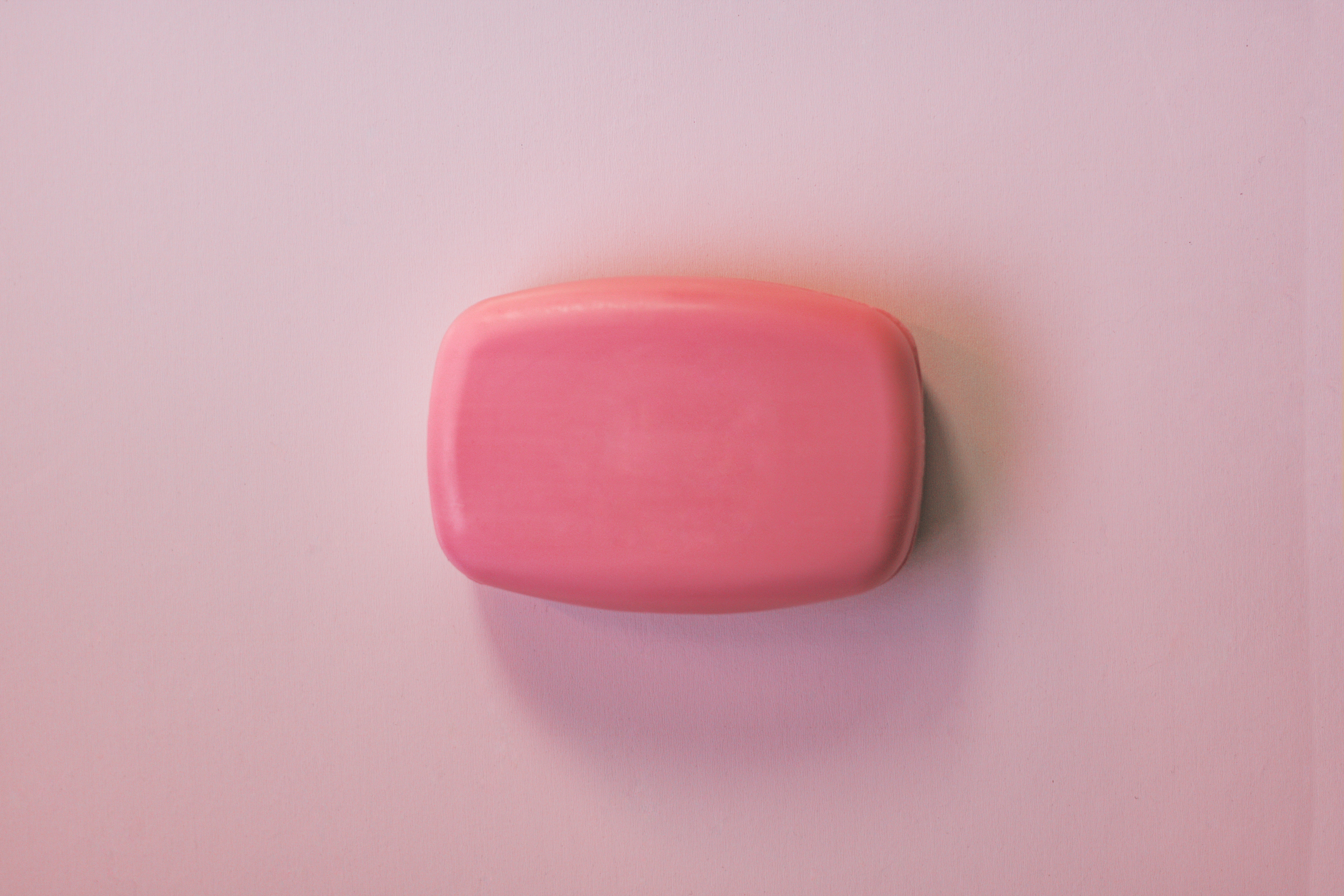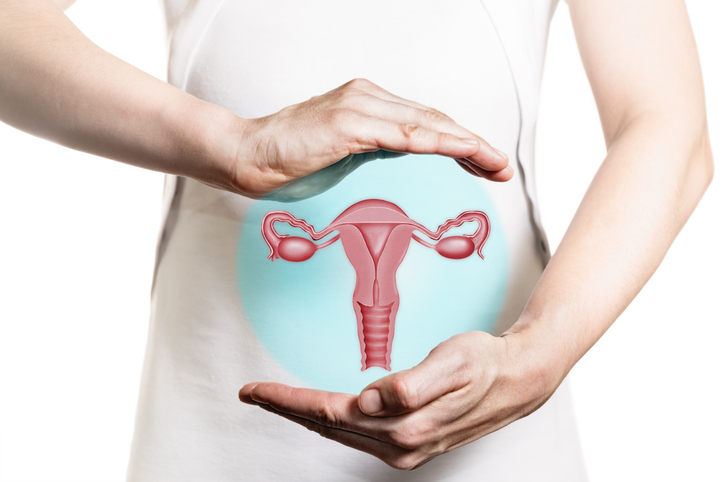Noticed a watery, white or grey discharge in your pants, along with a strong fishy smell? These could be signs of bacterial vaginosis (BV) – although only a test by a doctor or nurse can tell you for sure.
About 1 in 3 women will have BV at some point. But many will have no symptoms at all. You may be reading this because you’ve been diagnosed with it and want to find out more. Or perhaps you’ve had it in the past, and want to make sure it doesn’t come back.
“You may wonder what’s causing your symptoms, and feel anxious it might be something serious,” says Dr Adiele Hoffman, Healthily Clinical Content Reviewer. “Or if you know it’s BV, you might be confused about how you got it, and what it means for you and your sex life. Some women say they feel self-conscious, and uncomfortable about being intimate. While others say they feel ashamed. There’s also still a stigma about talking about problems that affect our genitals. But BV is easily treated – so read on to get the information and help you need.”
What is bacterial vaginosis?
BV isn’t considered a sexually transmitted infection (STI), although it can be linked to having sex. It’s caused by an imbalance of bacteria in your vagina.
It’s the most common cause of abnormal vaginal discharge in women aged 15 to 44, and you can also get it during the lead-up to the menopause (perimenopause).
BV is usually nothing serious, and a course of antibiotics should sort it. It can occasionally be more serious if you’re pregnant – but your doctor can help you get the right treatment.
However, having BV can be uncomfortable and inconvenient, and up to 80% of women get it again within 3 months of treatment. So it’s important to know how to identify and manage BV – and about the everyday tweaks you can make to stop it coming back.
Bacterial vaginosis symptoms
About 50% of women have no obvious symptoms of BV. But if you notice a change in your vaginal discharge, check the:
- colour – discharge caused by BV is usually greyish-white
- smell – BV causes a fishy odour, which can be stronger and more obvious after sex or during your period
- consistency – BV discharge is usually thin and watery
- way you feel – BV doesn’t usually cause pain or itching (if you have these symptoms, you may have another condition)

Is it BV or thrush?
Both BV and thrush are common, non-STI causes of abnormal vaginal discharge.
Thrush doesn’t always have symptoms either. If it does, you may notice:
- thick white discharge, possibly with a yeasty smell
- itching and soreness in and around your vagina
- pain when peeing or having sex
But only a test by a doctor or nurse can tell you for certain if it’s BV, thrush or something else that’s causing your symptoms.
What causes BV?
There isn’t a simple answer to this. So far, scientists haven’t found a germ that directly causes BV. But it seems to happen when you get an overgrowth of some of the bacteria that live in your vagina.
Like your gut, your vagina is home to a community of bacteria. Normally, they stay in balance and help keep your vagina healthy.
But with BV, you get more anaerobic bacteria (bacteria that grow in an environment without air), and less lactobacilli bacteria – sometimes known as ‘good’ bacteria. This imbalance makes your vagina less acidic than normal.
Experts don’t know exactly what causes the delicate balance of bacteria in your vagina to change and cause BV. But some things seem to raise the risk:
The sex connection
Hang on – didn’t we say BV wasn’t an STI? That’s right: it isn’t caused by a germ that can be passed on during sex. And women who’ve never had sex can still get it.
But being sexually active does seem to be a trigger for BV (as it is for thrush). And a change of sexual partner, or having lots of partners, can raise your risk. Scientists don’t fully understand why, but sex seems to affect the balance of bacteria in your vagina.
Sex can be a BV trigger, whatever gender your partner is. Although it’s less likely if you have a male partner who’s circumcised. If you have sex with women, you may be at particular risk of getting or passing on BV.
Other causes
Other things that may trigger BV by affecting your vagina’s bacterial balance include:
- washing inside your vagina (douching)
- using perfumed products near your vagina – such as washes, wipes, deodorants and sprays
- smoking
- your period – menstrual blood has a neutral pH, so it’s thought it can make your vagina less acidic
- using an intrauterine device (IUD) – 1 study found this could be because this form of contraception can cause irregular vaginal bleeding

Is BV ever serious?
BV is generally mild, and usually clears up with treatment. But there are a few situations where it may be more serious:
- BV and pregnancy – if you’re pregnant, there’s a small chance of complications, such as miscarriage, premature birth or having a baby with a low birth weight. Though BV doesn’t cause any problems in most cases, it’s important to see a doctor for treatment if you’re pregnant and notice a change in your vaginal discharge
- BV and STIs – while BV isn’t considered an STI, it may leave you at higher risk of getting an STI. This is thought to be because BV makes your vagina less acidic, meaning it has lower defences against infection
- BV and PID – there may be a link between having BV and pelvic inflammatory disease (PID), but studies haven’t proved that BV can cause PID
Preventing BV
Making a few tweaks to your routine can help to lower your chances of getting BV. Try to:
- avoid douching – you don’t need to clean your vagina, as it cleans itself, and douching can trigger BV
- use unscented products to clean your genitals (vulva) – ditch the scented shower gels and bubble baths, which can trigger BV. You can just use water, or try a mild, unperfumed emollient
- choose mild laundry products to wash your underwear – and avoid strongly perfumed detergents
- use condoms during sex – as well as preventing STIs, condoms may cut your risk of BV by up to 20%
- consider hormonal contraception – if you need it. Scientists don’t know exactly why it may lower your risk, but 2 reviews of studies found that hormones in contraceptives such as the combined pill may have an effect on the cells in your vagina, and boost levels of lactobacilli bacteria. It might also help because it can mean you have fewer periods
When to see a doctor
You should always see a doctor if you think you might have BV, so they can diagnose and treat you.
Without a test, it’s hard to know if it’s BV or something else, such as thrush or an STI. This means you might get the wrong treatment from a pharmacy, which won’t work.
If you prefer, you can go to a local sexual health clinic rather than your doctor. They’re more anonymous, you can often get a walk-in appointment, and you may get test results more quickly.
You can also buy self-testing kits from a pharmacy, but they aren’t as accurate as those your doctor will use.
You should also see a doctor if:
- you have new or unusual vaginal discharge that smells or looks different
- you have a rash, itching or soreness on your genitals
- you’ve recently changed sexual partners or had multiple partners, and you have symptoms of BV – as some STIs have similar symptoms
- you have unusual discharge and a temperature (fever) or tummy pain
Use our Smart Symptom Checker to help you talk about symptoms in your appointment.
How is bacterial vaginosis diagnosed?
When you see a doctor, they’re likely to:
- ask about your medical history, recent sexual activity and any previous infections
- do a pelvic exam – to look at your vulva and vagina
- take samples – usually just by wiping a cotton bud over some of the discharge inside your vagina (so it shouldn’t be uncomfortable), which will be looked at with microscope
- test your vaginal pH – this measures the acid-alkaline balance in your vagina. When you have BV, your vagina is less acidic, and its pH will be higher than 4.5
Preparing for your doctor’s appointment
Many people feel a bit embarrassed seeing a doctor about a vaginal problem. But remember, they’re there to help you, and they’re very used to treating these sorts of issues – they’ve seen it all before.
It can help to be prepared, especially if you’re feeling uncomfortable. Beforehand, make a note of a few things you may want to discuss, such as:
- your symptoms and when they started
- your recent sexual activity (especially if you have a new partner)
- any previous infections or STIs
Treatment for bacterial vaginosis
If your doctor diagnoses BV, you have 2 treatment options:
- antibiotics – you’re likely to be prescribed an antibiotic called metronidazole, either as tablets or a gel that you put into your vagina. Other options include clindamycin – usually as a vaginal cream, or sometimes tablets – and tinidazole tablets. You should avoid alcohol while taking metronidazole, and for 2 days afterwards. It can sometimes leave a metallic taste in your mouth – drinking plenty of water and sugar-free chewing gum or sweets may help. Feeling sick (nausea) is also a common side effect – try these self-care tips to stop feeling sick
- vaginal gels – your doctor may suggest you try a non-antibiotic vaginal gel for treating BV, which you can buy from a pharmacy. More research is needed, but small studies have shown promising results, with little or no side effects

If it comes back after 3 months
It’s thought that up to 80% of women get BV symptoms within 3 months of treatment. If this happens, your doctor may:
- check you’ve followed your course of treatment
- rule out other conditions
- talk about any contributing lifestyle factors
- look at your current treatment
If it comes back a third time
If you get BV more than twice in 6 months, you may need to try taking treatment over a longer period – for up to 6 months.
Watch this space: can taking probiotics help?
Probiotics – ‘good’ bacteria – are available to buy, and can either be taken orally or inserted into your vagina. A small number of trials have shown these may be helpful in treating BV, although larger studies are needed.
In 1 small trial, women who had taken a course of antibiotics for BV then inserted a probiotic called lactobacillus crispatus (Lactin-V) into their vagina for 11 weeks. These women were found to be less likely to get BV again within 12 weeks, compared with those who hadn’t taken the probiotic.
Your health questions answered
Can men get BV?
“No – a penis doesn’t have the same community of bacteria. But a man can carry bacteria linked with BV on his penis. This means your risk of BV is higher if you have lots of partners and have unprotected sex, as you’re more likely to come into contact with bacteria.”
Can I have sex when I have BV?
“As discussed, BV isn’t an STI. And if you’re having sex with a man, you don’t need to worry about giving them BV – although some people may feel self-conscious about sex if they have symptoms. However, if you have sex with a woman, you can pass BV to them. So if you or a female sexual partner has BV, use a dental dam (a thin piece of latex you place over your vagina), and condoms on any sex toys (using a new condom before sharing the toy with your partner). It’s best to take these protective measures until BV has been successfully treated.”







